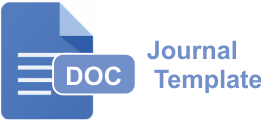Analysis of the Alignment Between Reading and Writing Al-Qur’an (BTQ) Lessons and Islamic Education Curriculum for Junior High School Class VII
DOI:
https://doi.org/10.71305/jmpi.v3i1.213Keywords:
Lessons Material, Reading And Writing Al-Qur’an, Pedagogical Evaluation, Talaki Approach, Learning OutcomesAbstract
This research aims to determine the alignment between Quranic Education Learning textbooks for junior high schools (SMP/MTs) and the Quran Reading and Writing (BTQ) Instrument. The study analyzes the content of these textbooks to assess how well they align with the BTQ instrument. Using a library research approach under descriptive qualitative research, the data is analyzed through content analysis. The textbook Pendidikan Al-Qur'an, published by the South Kalimantan Education Office, is evaluated using the BTQ book from the Ministry of Religious Affairs. The results show that competency achievement indicators are not included, especially in reading examples and the application of reading rules in certain surahs. However, the textbook meets several important indicators. It covers reading and writing Quranic verses, tajwid, tahsin, and murajaah, following the Islamic Education Learning Outcomes. The material aligns with Arabic language rules, tajwid, and makhārijul ḥurūf progressively, while also integrating tahsin and murajaah aspects. Furthermore, it incorporates elements of scientific and technological development and ensures completeness and systematic progression according to student levels. From an enrichment perspective, this textbook strengthens students' ability to read and memorize the Quran. It also offers comprehensive practice and evaluation, covering knowledge, attitudes, and skills. The practice approach follows the Talaki method and includes multiple-choice and essay tests, ensuring in-depth learning and skill development.
Downloads
Published
How to Cite
Issue
Section
License
Copyright (c) 2025 Dhia Alfa Della; Taufik Abdullah Attamimi; Uswatun hasanah; Ririn Khairunnisa

This work is licensed under a Creative Commons Attribution 4.0 International License.























